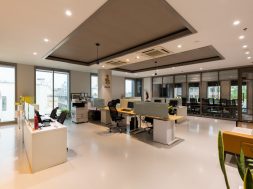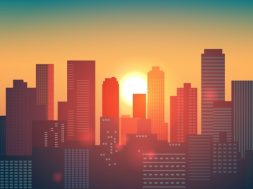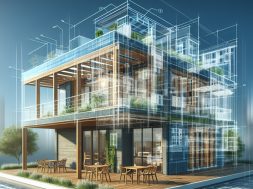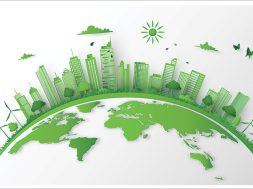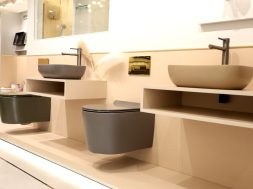Envelope blueprints and smart cost solutions

The importance of green building envelopes has always been a prominent concept in the architectural and construction worlds. Paving ways for various sustainable solutions has been the key highlight of the discussion, where industry experts have shared their opinions on enhancing energy efficiency and environmental sustainability.
A green building is intended to reduce environmental impact while increasing tenant well-being through energy and water efficiency, sustainable materials, and enhanced indoor environmental quality. It features renewable energy, water-saving fixtures, non-toxic materials, and effective waste management. Site selection encourages lower transportation needs and integration with the natural environment, whereas green roofs and passive solar design are two architectural techniques. Green buildings strive for sustainability by balancing environmental, economic, and social concerns; they frequently seek certification from standards such as LEED or BREEAM. They help to achieve sustainable development by lowering resource use and fostering a healthier living environment.
While understanding the definition of a green building in online interaction, Dr. Anshul Gujarathi, Founder & Director of Eco Solutions®, states, “A green building is a solution that has received third-party certification like IGBC and LEED by inspections that certify their sustainable practices adhering to stringent requirements and providing measurable environmental benefits.” Parallel to this discussion, Shabbir Kanchwala The Principal of The Global Network for Zero highlights, “green buildings reduce energy and water use through innovations such as LED lighting, solar electricity, and rainwater collection. Low-flow faucets and showers conserve resources and lower household maintenance costs.” Adopting green practices, particularly through efforts like the Global Network for Zero, reduces operational costs per seat by cutting electricity use. These buildings save money, promote environmental stewardship and improve people’s well-being.
Dr. Nilesh Gandhi, Founder & Director of Metadesign, agrees with Shabbir’s thoughts, emphasising the importance of prioritising green architecture given India’s rapid economic expansion. Rajiv Singal, MD of Plaksa Solutions, highlights India’s status as a major GHG emitter. Construction adds considerably. Green buildings prioritise resource efficiency, recycling, and longevity while attempting to harmonise with nature. They decrease GHG emissions and maintenance, promoting a sustainable built environment.
Design aspects
Building envelope designs are critical to decreasing energy use and increasing building sustainability. They improve insulation, maximise natural light, and reduce heat transmission, lowering the demand for heating and cooling. Effective envelopes also use durable, recyclable, and energy-efficient materials, which help to achieve long-term sustainability goals. These designs contribute to more environmentally responsible and economically viable buildings by efficiently regulating energy demand while preserving indoor comfort levels.
According to Nilesh, the building envelope is a protective barrier against environmental changes essential for indoor comfort. A fixed element must be carefully designed to ensure its long-term viability. Orientation is important, especially in tropical regions like India, where reducing heat gain from the southwest facade is critical. The strategic use of materials such as glass and composites and sustainable alternatives such as concrete panels and hollow blocks can improve energy efficiency. The envelope’s design substantially impacts a building’s overall sustainability and energy consumption, highlighting the need for careful planning and material selection.
Anshul mentions that real estate development impacts various industries, including transportation infrastructure, and influences broader issues outside its focus. Emphasising best practices is crucial for developers seeking to sustain responsible growth. In the future, adherence to comprehensive sustainability measures will be critical for maintaining resilience and ongoing development in line with long-term environmental and societal needs.
Net-zero journey
Achieving net-zero emissions includes technology limits, huge transition costs, and regulatory uncertainties. To address these issues, it is necessary to innovate, collaborate across sectors, have solid regulations, and provide financial incentives. Strategic planning and international cooperation are critical for overcoming these hurdles and achieving long-term net-zero goals.
Shabbir states that India’s journey to net-zero emissions entails making all structures run more sustainably, including malls, industries, and cars. This implies a shift towards electric vehicles and solar power to lessen reliance on fossil fuels and coal. His organisation targets scope one, two, and three emissions with zero-emission initiatives over three to five years. It is involved in international projects, including ones in India, and seeks to optimise water and energy use in data centres, warehouses, and other facilities. India wants to lead developing countries in attaining net-zero emissions by reducing energy use and carbon footprints, including embodied carbon.
Rajiv highlights that understanding the focus on initial equipment costs rather than ongoing usage fees is crucial before addressing cost constraints. This ecosystem involves builders, contractors, subcontractors, and ready-mix material suppliers. Manufacturers now offer a dual approach of renting plastering machines and materials, as seen in Dubai, Ireland, and Europe. Their organisation aids machine provision by extending payment periods to subcontractors lacking upfront funds. Collaborations with banks support this initiative, ensuring broader access to advanced plastering technology in the construction industry.
The role of certifications, as highlighted by Dr. Mala Singh, Chairperson of IGBC Mumbai Chapter, is crucial in promoting sustainable construction practices. Since its founding in 2001, the IGBC has made significant strides in India, starting with the platinum-rated Shivaji Goodrich Business Centre in Hyderabad. It now covers 11.76 billion square feet across various sectors. With 32 rating systems tailored to India’s diverse climates and regional concerns, the IGBC fosters sustainability and climate resilience, aligning with national decarbonisation and net-zero emissions goals. This emphasis on green buildings contributes to resource efficiency and societal well-being. The real estate sector’s adherence to certifications also aligns with the UN Sustainable Development Goals (SDGs), impacting nine SDGs, including affordable housing, energy efficiency, and sustainable urbanisation, which are vital to global sustainability.
Architects must prioritise sustainable materials, excellent insulation, and efficient daylighting to meet certification standards, ensuring optimal performance and environmental stewardship. Nilesh further underscores the importance of LEED and IGBC rating systems in raising early awareness and integrating eco-friendly practices from the project’s inception, driving the adoption of sustainable building practices on a large scale.
Cookie Consent
We use cookies to personalize your experience. By continuing to visit this website you agree to our Terms & Conditions, Privacy Policy and Cookie Policy.

